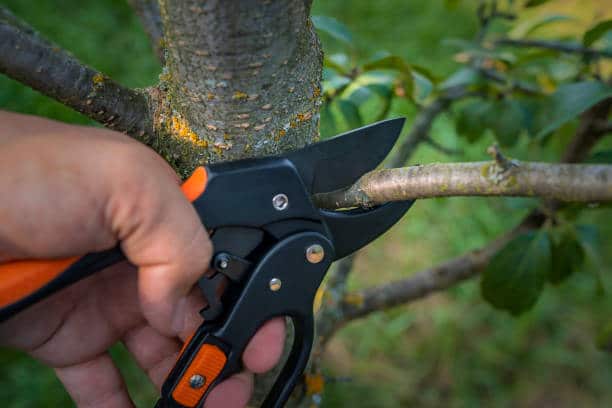Bush trimming is an essential aspect of maintaining a beautiful and healthy landscape. Proper pruning not only enhances the aesthetic appeal of your property but also promotes plant health and longevity. However, many homeowners make common mistakes that can harm their bushes and compromise their overall garden design. In this blog post, Top Cuts Tree Service & Landscaping will guide you through the top five bush trimming mistakes to avoid, ensuring your landscape remains vibrant and well-maintained.

Understanding plant growth cycles is crucial for successful bush trimming. Different types of bushes have varying optimal pruning seasons, and trimming at the wrong time can have detrimental effects on their health and appearance.
For most deciduous shrubs, late winter or early spring is the best time for pruning, just before new growth begins. This allows the plant to heal quickly and direct energy into new growth. Spring-flowering shrubs, however, should be pruned immediately after they finish blooming to avoid removing next year’s flower buds.
Evergreen shrubs are generally more flexible and can be pruned in late winter, early spring, or mid-summer. Avoid pruning in late fall, as this can stimulate new growth that may not have time to harden off before winter, leaving the plant vulnerable to cold damage.
Trimming at the wrong time can result in reduced flowering, stunted growth, or even plant death. At Top Cuts Tree Service & Landscaping, we understand the importance of timing and can help you determine the best pruning schedule for your specific plants.
While regular pruning is beneficial, excessive trimming can severely damage your bushes. Over-pruning can stress the plant, leading to weakened growth, reduced foliage, and increased susceptibility to pests and diseases.
Proper pruning techniques involve removing no more than 25-30% of the plant’s growth in a single season. Focus on removing dead, diseased, or crossing branches first. Then, selectively thin out some of the older stems to encourage new growth from the base.
Maintaining the natural shape of the bush is essential for its overall health and appearance. Avoid creating unnatural shapes or overly formal designs unless working with specific topiary plants. Instead, work with the plant’s natural growth habit to enhance its inherent beauty.
Having the right tools for the job is crucial for effective and safe bush trimming. Essential tools include hand pruners for small branches, loppers for thicker stems, and hedge shears for formal hedges.
The importance of sharp, clean tools cannot be overstated. Dull tools can crush stems instead of making clean cuts, potentially introducing diseases or causing unnecessary damage. Always clean and disinfect your tools between plants to prevent the spread of pathogens.
Matching the tool to the job is equally important. Using tools that are too small or large for the task at hand can result in poor cuts and potential injury. At Top Cuts Tree Service & Landscaping, we use professional-grade tools and equipment to ensure precise and efficient pruning.
Safety should always be a top priority when trimming bushes. Personal protective equipment (PPE) such as gloves, safety glasses, and sturdy footwear is essential to prevent injuries from sharp tools and falling debris.
Proper handling of tools is crucial to avoid accidents. Always keep both hands on the tool when in use, and be mindful of your body position to maintain balance and control.
Awareness of surroundings and potential hazards is vital. Be cautious of power lines, unstable ground, and nearby structures. If working on tall bushes or hedges, use a stable ladder or consider hiring professionals like Top Cuts Tree Service & Landscaping for safe and efficient trimming.
Proper bush trimming goes beyond just shaping and size control. It’s essential to identify signs of disease or pest infestation during the pruning process. Look for discolored leaves, unusual growths, or evidence of insect activity. Addressing these issues early can prevent more severe problems down the line.
Proper disposal of trimmed material is crucial, especially if disease or pests are present. Infected plant material should be bagged and disposed of properly to prevent the spread of pathogens to other plants in your landscape.
Post-trimming care is equally important for maintaining plant health. Water the bush thoroughly after pruning and consider applying a balanced fertilizer to support new growth. Mulching around the base of the plant can help retain moisture and suppress weed growth.
In conclusion, avoiding these top five bush trimming mistakes will help ensure the health and beauty of your landscape. Proper timing, careful pruning techniques, using the right tools, prioritizing safety, and maintaining plant health are all crucial aspects of successful bush trimming.
At Top Cuts Tree Service & Landscaping, we understand the intricacies of proper bush trimming and maintenance. Our experienced professionals can help you achieve a stunning, healthy landscape while avoiding common pitfalls. For expert bush trimming services and landscaping advice, don’t hesitate to call us at (443) 975-4810. Let us help you create and maintain the beautiful outdoor space you’ve always dreamed of!